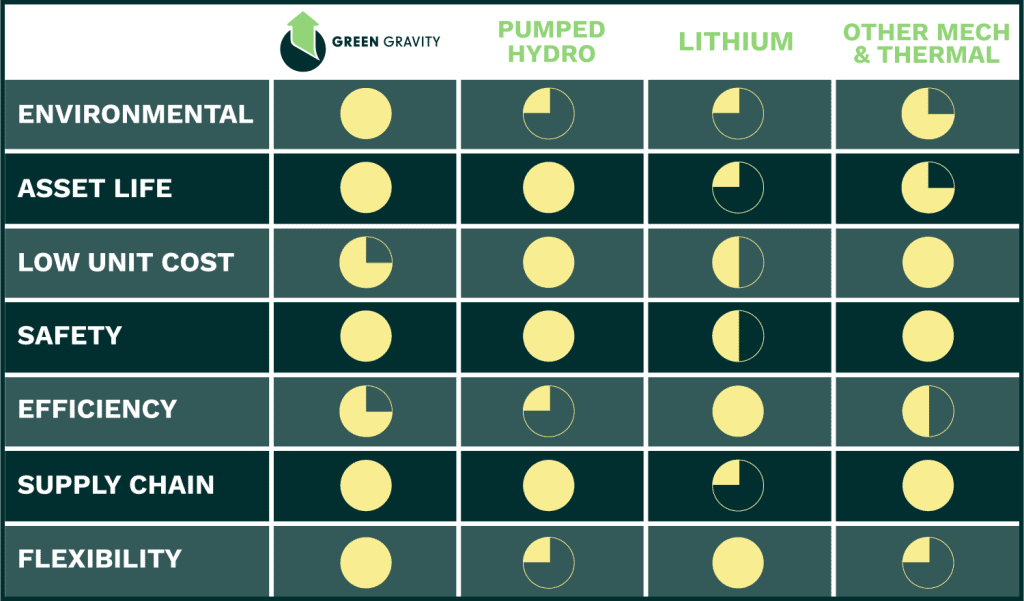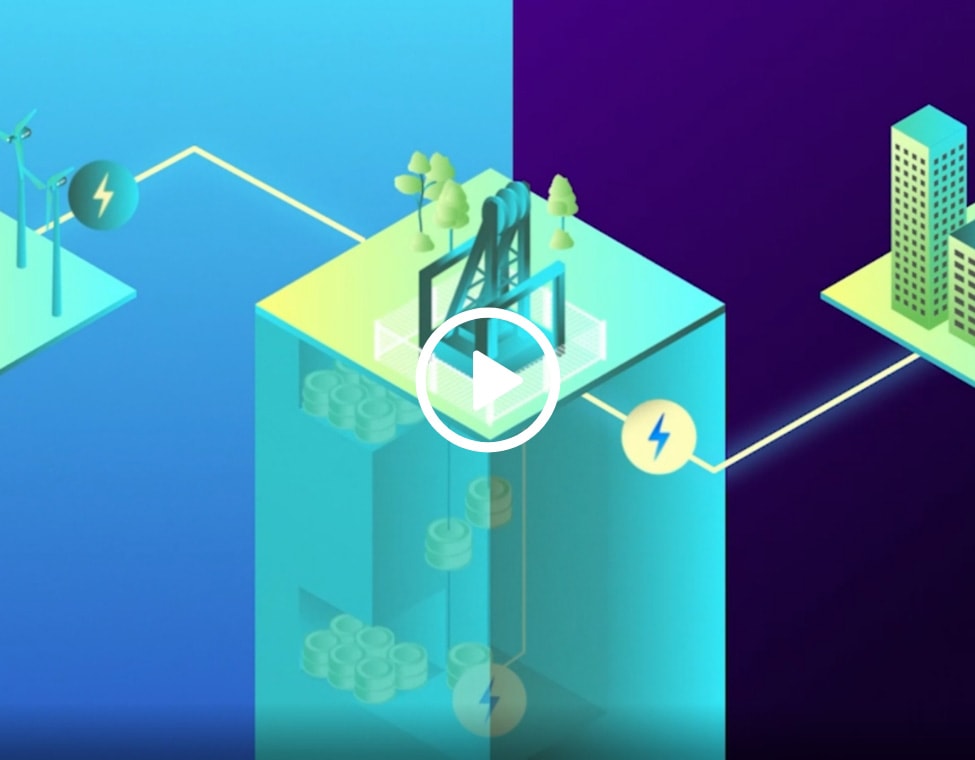Building the future of renewables using gravitational energy storage
Our technology
Green Gravity’s energy storage system moves heavy weights vertically in legacy mine shafts to capture and release the gravitational potential energy of the weights. By simply using proven mechanical parts and disused mine shafts, Green Gravity’s energy storage technology is low-cost, long life and environmentally compelling.
Storing energy in this way uses no processed chemicals and has no performance degradation. Moving weights vertically allows for high Round Trip Efficiency and using legacy mine shafts allows reuse of existing structures, contributing to the circular economy and lowering costs.
Green Gravity’s energy storage technology improves the economics of wind and solar power, leading to a faster and lower cost transition away from fossil fuels. Truly the next generation of ultra-green energy.

Using gravity to store energy
Green Gravity’s energy storage solution harnesses the fundamental principles of gravity and kinetic energy to store and dispatch energy by lifting and lowering heavy-weighted objects. Green Gravity’s innovative technology was inspired by pumped hydro like Snowy 2.0.
Like pumped hydro, we use the gravitational potential energy of a mass moving between two heights. However, rather than water between two dams, Green Gravity requires much less space by using very dense materials. To overcome friction, a vertical height available from a mine shaft is used rather than an incline on the side of a hill.
How Green Gravity's energy storage works

Demonsrating Using The Gravity Lab™
The Gravity Lab™ is a specialised research facility aiming to gather precise performance data from our proprietary gravitational energy storage system. Green Gravity has partnered with BlueScope Steel to create The Lab in Port Kembla, Australia.
The Lab enables cutting-edge R&D on gravitational energy storage. It can test the technology’s capabilities by moving 16 weighted objects in a sequence, focusing on power generation capacity, efficiency, and grid connection dynamics.
How it stacks up

Applications for the Green Gravity energy storage technology
Our solution can provide services at all levels of the electricity system. We make renewable energy cheaper, make the grid more stable and reduce transmission costs, and can help mines and industrial plants reduce carbon emissions. We also have a role in supporting local community energy schemes through firming distributed energy resources.

Power Generation
Managing Intermittent renewable generation
Energy Arbitrage
Peak Shaving

Transmission
Ancillary Services
Transmission Constraints
Inertia Services
Responsive Flexibility Services
Voltage Support

Distribution
Reactive Power
Voltage Support
Local Security
Distribution Losses

End Users
End Users
Power Reliability
Energy Management
DER Firming
Mine Decarbonisation
Frequently Asked Questions
Gravitational storage refers to a process of converting electrical energy into gravitational potential energy through moving an object to a height. The energy is then released back to electrical energy at a later time by moving the object to a lower height, in the process turning an electric motor using the kinetic force of the descending object.
Green Gravity’s system can be deployed in many types of mine shafts. With nearly 100,000 shafts in Australia, this offers many potential deployment locations. Locations with the best economic case include those with shafts built after 1950, with electrical infrastructure sill accessible, and with greater depth. Shafts over 300 metres deep offer very attractive energy economics.
Green Gravity’ energy storage system is fundamentally more sustainable than chemical batteries. Some of the most important differentiating points include:
- Our parts can be locally sourced. Lithium batteries are developed using water intensive processing, combined with rare minerals and are assembled in a long global supply chain.
- We use basic steel cables, motors and recycled and inert materials. Chemical batteries are future landfill liabilities and are hazardous materials.
- Gravitational energy systems do not leak energy over time, don’t degrade and have very long asset lives. The energy system needs long-term stable clean capacity. Green Gravity can deliver equipment life 3 to 4 times longer than a chemical battery.
- Green Gravity re-uses existing infrastructure. We take minesites, which are sitting idle today, and convert them into energy storage systems capable of accelerating the uptake of renewable energy.
Green Gravity uses existing proven technology from the steel, mining and energy sectors to build the energy storage centre. We use cables, weighted blocks, mine winders, electric motors and off-the-shelf handling equipment to make our technology work.
The weights moved depend on the depth and market configuration for an individual storage centre. For a large shaft, we move weights up to 40 metric tonnes, which give us the capability to store up to 10 kWh of energy per 100 metres of depth. For context, an average car weighs 1.3 tonnes, meaning we drop objects weighing the equivalent of 30 cars.

